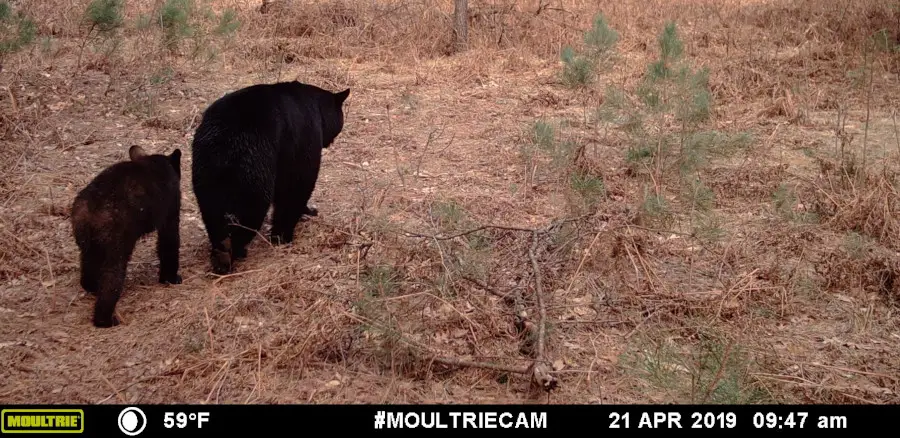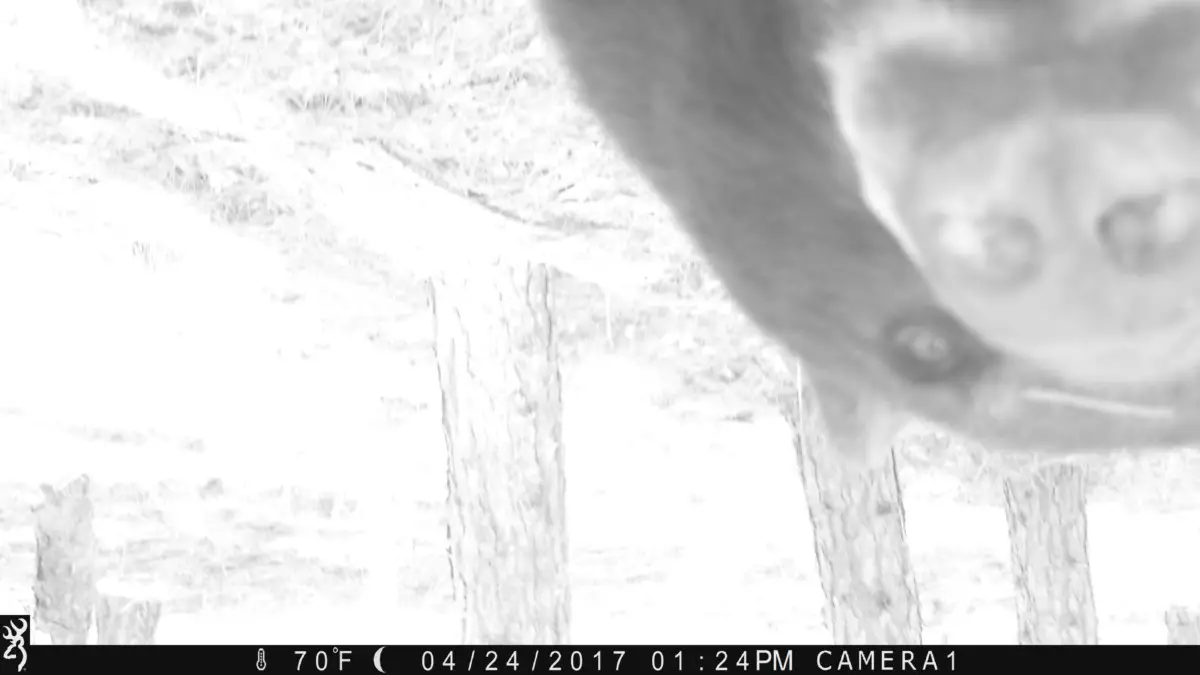Over the past decade the bear populations across North America have steadily risen. An estimated 600,000 Black Bear spread across 41 of the 50 states in the US, and another estimated 500,000 inhibit the dense forests of Canada. With steady population growths across much other their historical ranges, and their expansion into more suburban environments have lead to more bear and human encounters. These encounters tend to be inherently harmless, such as knocking over trash cans and bird feeders, and more recently, bears have become more fond of checking out trail cameras as well.
A few years ago I had picked up my first photo of a black bear in West Michigan. Within no time, their curiosity of the camera has resulted in hundreds of pictures of a bear swatting, biting and ultimately crushing one of my Browning trail cameras.
While my situation is not new to the hunting world, with hundreds of cameras each year being ruined by black bear, it was new to me, and one I couldn’t afford to have become a regular occurrence. So I created a system that has been ultimately effective in deterring bears from ruining trail cameras just out of their own innate curiosity.
The key to protecting your trail camera from bears is to keep it out of their eye sight, eliminate scent around your camera, and to use reinforced lock boxes to protect them.
Step 1 : Use Black Flash Cameras

There is a substantial myth out in the world that bears have poor eyesight. The truth is, bears have vision that is quite similar to humans. While like humans, some bears see better than others, most black bears have 20/20 vision. They can decipher colors, shapes and movement extremely well. What sets a bear’s eyesight apart from a human’s is their ability to see at night. Similar to a deer, bear have a shinny substance called tapetum lucidum on the retina. This allows them to navigate through the woods at night as well, if not better than during the day.
Bear, like humans also have the ability to see colors with long wavelengths. While deer, who predominately see short wave lengths such as blue and purple, bear have the ability to see red, orange, and yellow as well. This makes using an infrared trail camera problematic during night time photos. They are able to pick up the red glow from a trail camera, the same way we would. This creates attention to a camera, and sparks a bear’s interest.
The first step to bear proofing your trail camera’s is to use black flash trail cameras. These cameras are designed to have no glow at all, making them virtually undetectable to a bear’s eye.
Step 2: Hang cameras high
To hide your trail cameras from the vision of a bear, you need to go through the proper steps of hanging cameras in the same fashion you would if you were having a problem with thieves stealing your camera. Since a bear’s eyesight is comparable to a humans, it makes sense to hang your cameras high and out of direct sight.
How high should you hang a camera? Well, a mature black bear can reach from the ground roughly 7 ft into the air. So as a safe measure I hang my cameras in high bear density areas at least 8 ft. This way if a bear does happen to see the camera, it is out of its reach.

Step 3: Use Small Diameter Trees
You might be asking yourself the obvious question: If bears can climb why why would hanging a camera at a height of 8 ft matter? The truth is, if you hang your trail camera on a good sizable tree, it doesn’t matter. A curious bear will climb up and easily access your camera. This is why you need to use trees with a small diameter.
The average mature black bear weighs in at around 300 pounds. Think of an offensive lineman in the NFL weighs in around the same weight. A small diameter tree, one you can fit your hand around, will likely not hold the weight of large bear. The small diameter will also not allow a a bear to get all of its claws into the tree, making it slightly more difficult to climb. While a determined bear might still find a way, hanging your trail camera on small diameter trees higher into the air, will deter some.
Step 4: Eliminate Scent
The sense of smell is what a bear relies on more than anything else. To put it into perspective, humans use bloodhounds for their sense of smell. A bloodhound is able to find drugs in an a car’s gas tank that is wrapped in carbon. Their sense of smell is 300 times better than a humans. A bear on the other hand has a sense of smell that is estimated to be 2,100 times better than ours.
The truth is you will never be able to shower enough, use enough scent sprays, or have a good enough ozone treatment to fool a bear’s nose. But, you can do the little things that might be enough to not attract them.
The biggest thing to keep in mind is that you don’t want to loiter around your trail camera. Every second you are at your trail camera site, you are leaving more and more scent. Scent that a bear might associate with the possibility of food, and come over to investigate.
What I do is when I am changing out trail camera SD cards, I use OnX mapping systems. I mark each camera with a number on the app. That number is the same number I marked each correlating SD card. (A labeling system that we recommend using, and outline thoroughly here ) Before I reach my camera location I pull the SD card out and have it in my hand. When I reach the trail camera, I turn off the camera, pull the card from the camera, and replace it with the new one. Turn the camera on and walk away. At no point does a bag touch the ground, and under no circumstances do I stop to view my photos at the camera site. The goal is to be at the camera for as little as possible.
Step 5: Use Lock boxes and Cables
It is inevitable, that no matter if you take every precaution to eliminate scent, and keep your camera out of the reach and view of bears, if the are curious enough, they will eventually still find a way to reach it. This is where using sturdy lock boxes comes in handy.
The housing of your trail camera is made up of reinforce plastics, but even the toughest plastic is going to break and crack under the pressure of a bear. Using metal lock boxes that are designed to encase your specific trail camera, will keep your camera out of harms way. Every trail camera manufacturer makes lock boxes that are designed to house their cameras. You can often find them at cheaper prices on Amazon.
The other important note is to use python cables to secure it to the tree. While bears don’t walk around with bolt cutters, in my experience, they use their brute force to pull the camera onto the ground. The nylon straps that come with the camera, are no match for a bear, but a python lock has a weight resistance much greater than the strap, and will be increasingly difficult for a bear to pull your camera from the tree.

Step 6: Get a Good Warranty
While the first 5 steps of bear proofing your trail camera are all based around deterring a bear from getting to your camera, it is important for you to protect your investment in every way possible. Lets face it, trail cameras are expensive, and if you lose a couple cameras to a curious bear, you are going to be out some cash.
This is why we always recommend using Exodus trail cameras. Aside from getting a high quality camera, they offer a 5 year theft and accidental damage replacement plan. This means that if you have a bear that gets to your camera, your camera is covered under the warranty. You can read more about their coverage here. Just know that Exodus is the only camera manufacturer that offers this type of warranty. While they no longer sell on Amazon, you can find their cameras on their website here.

